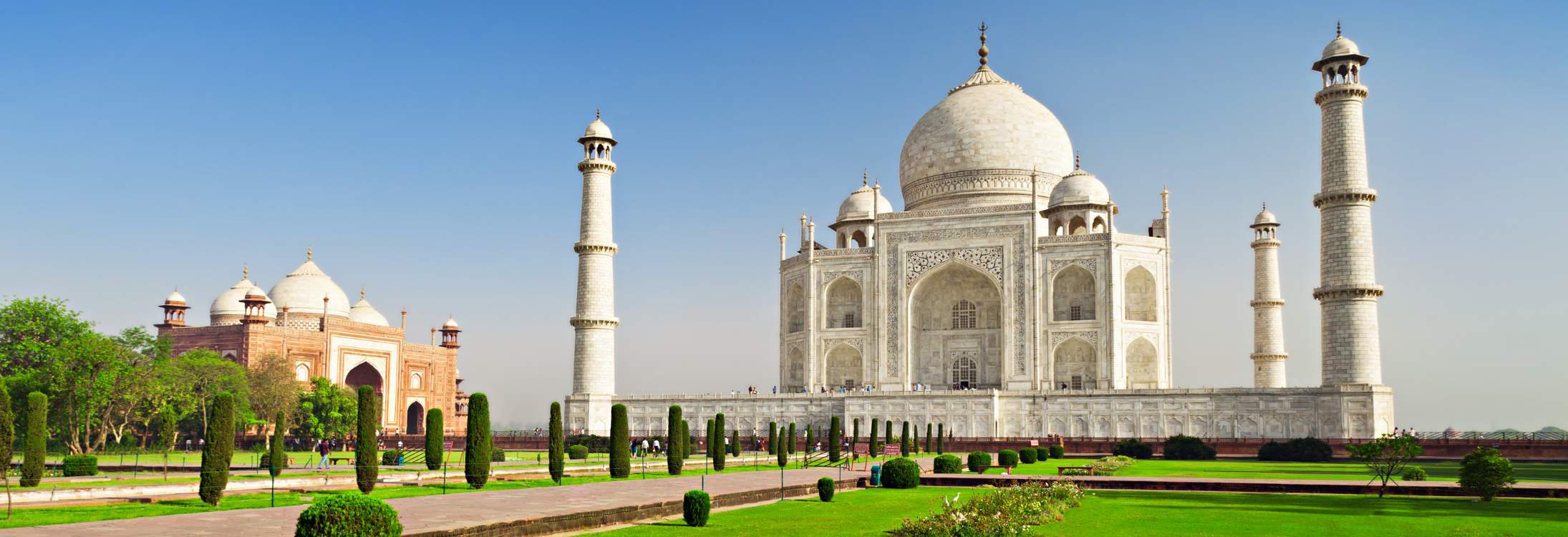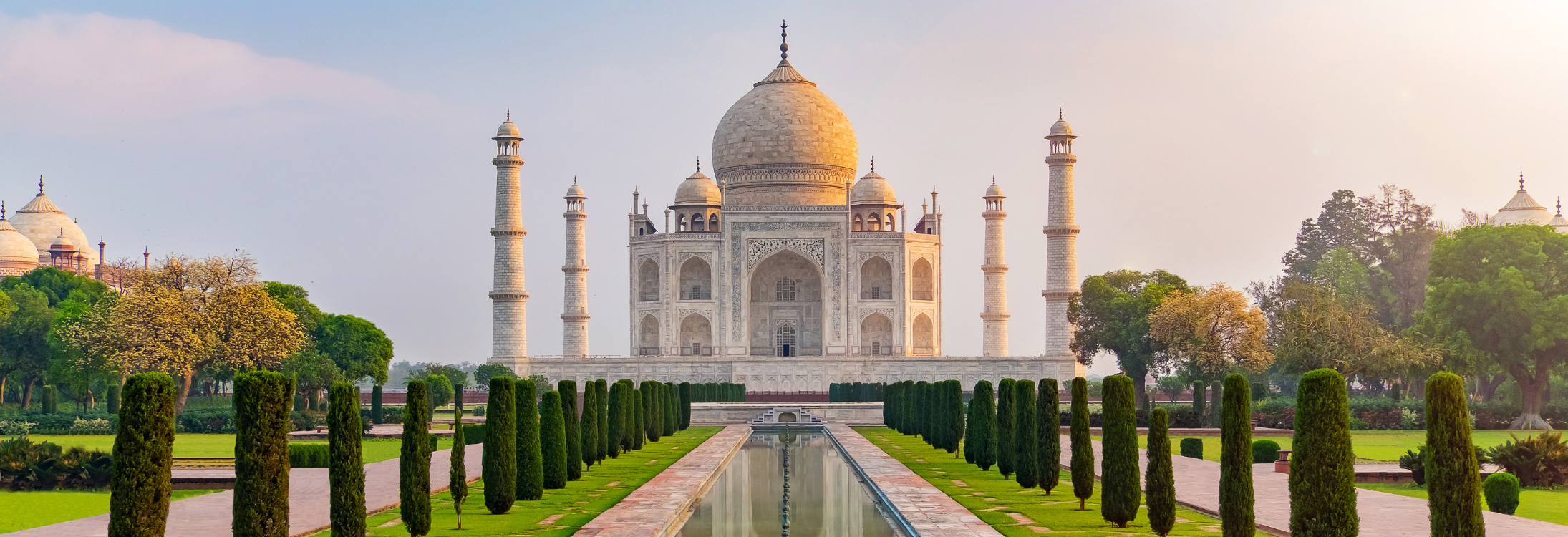Here are some interesting facts about Taj Mahal that you’ve never heard of before.
The story of the Taj Mahal is eternally imbibed on the pages of history ever since its construction began. Shah Jahan, the romantic that he was, added soul to the beautiful monument. The story of the Taj Mahal is nothing less than legendary, but it does come with a lot of controversies.

1. If the Taj Mahal was sold now, even Bill Gates wouldn’t afford it.
There are many theories around this. One accepted figure tells us that the value of the Taj Mahal is around $ 1 trillion.
2. It took more than two decades to build the Taj Mahal.
The architectural masterpiece took over 20 years to be completed and is a beautiful congruence of Mughal, Islamic, Persian, and Indian cultures.
3. Taj Mahal’s central dome is approximately equal to a skyscraper of 25 stories.
It is as high as 240 feet with intricate Quran verses inscribed on its entrance, keeping in line with the Islamic tradition.
4. The burials of Mumtaz Mahal are not in the Taj Mahal.
The heavily embellished stone inside an octagonal chamber is empty. The real tomb of the Queen’s body is laid under, at the garden level.
5. There’s a replica of the Taj Mahal in Bangladesh called Taj Mahal Bangladesh.
A filmmaker in Bangladesh thought that the less privileged in Bangladesh couldn’t afford to travel to India and witness the beauty. So, he constructed a replica that was completed in 5 years.
6. Taj Mahal was chronicled on the pages of history since 1983.
In 1983, the Taj Mahal was designated as a UNESCO World Heritage Site. Over one-fourth of a century later, the Taj Mahal was declared as one of the New Seven Wonders of the World, with over 1,000 million votes.
7. You will never know whether this is a rumour or the truth.
According to some rumours, it is believed that Shah Jahan ordered the fingers of workers be cut so that they were incapable of building anything else at par or even more majestic than the Taj Mahal. Some locals believe it to be true, while others don’t.
8. For almost 8 years until his death, Shah Jahan only saw the Taj Mahal from his window.
Aurangzeb put Shah Jahan under house arrest in 1658, declaring him incompetent to rule the empire. Hence, Shah Jahan was unable to visit the monument for one last time before his death.
9. Dubai is also bitten by the ‘Taj Mahal’ bug.
The ‘Taj Arabia’, which is modelled on the Taj Mahal is commissioned to open in Dubai. It will be a luxury hotel, claiming to be four times the size of the Taj Mahal.
10. Shah Jahan’s other wives are nearby.
Shah Jahan's other wives and his favourite servants are buried in mausoleums just outside the Taj Mahal.
11. A colossal army of men and elephants worked on the monument.
An entire army of over 20,000 men from various parts of the globe was summoned to build this beauty. These men got help from about 1,000 elephants to transport the huge stones and other materials required for its construction. Indians, Europeans, Persians, and Ottomans worked to build the Taj Mahal.
12. The Taj Mahal has 28 various types of precious/semi-precious jewels and stones that came from all around the world.
Some turquoise stone embellishments came from Tibet, jade ones from China and the heavy white marble was lugged from Rajasthan.
13. The Dakkhani Taj was built by his son Aurangzeb at Aurangabad - like father, like son.
Popularly known as ‘Bibi Ka Maqbara’, Aurangzeb built the monument somewhere in the late 17th century in memory of his mother, Dilras Banu Begum a.k.a. Rabia-ud-Daurani. Bibi ka Maqbara has a striking resemblance to the Taj Mahal.
14. Lord Curzon, the then viceroy of India, gifted a chandelier during restoration of Taj Mahal.
The monument was partially damaged during the Indian Rebellion of 1857. Later, in the 19th century, Lord Curzon took up the task of renovation and gifted the chandelier, which hangs in the Taj Mahal.
15. The clean white marbles of Taj Mahal are slowly getting tarnished to a shade of yellow because of the pollution.
To conserve the monument, the government declared a radius of 4,000 square miles around the Taj Mahal as an environmentally protected zone, and only electric vehicles are allowed in the area.
16. Taj Mahal had an unusual security system to protect itself from bomber planes.
Fake scaffoldings and structures were erected around the monument to dupe the German, Japanese, and Pakistani bomber pilots in various timelines of the 19th century.
17. Four minarets surrounding the Taj Mahal were constructed away from its main structure to avoid any disfigurement.
This was done so that, if any of them fall, they would fall away from the tomb, hence preventing additional damage.
18. Taj Mahal is the best standing example of the law of symmetry.
The architectural symmetry of the Taj Mahal is designed on the lines of self-replication. Therefore, if it weren’t for the gardens, it would be hard to tell which side is its entrance.
19. The changing colours of Taj Mahal reflect the changing mood of Mumtaz Mahal.
The Taj Mahal seems to wear a different hue at different times of the day. It looks pinkish in the morning and whitish in the evening. On a full moon day, the Taj Mahal radiates a stunning golden colour due to the reflection on the marbles.
So, what did you think about these facts? Interesting, aren’t they? Know of any facts that we’ve missed? Do share them with us in the comments.
Book hotels in Delhi and visit the fascinating Taj Mahal.
